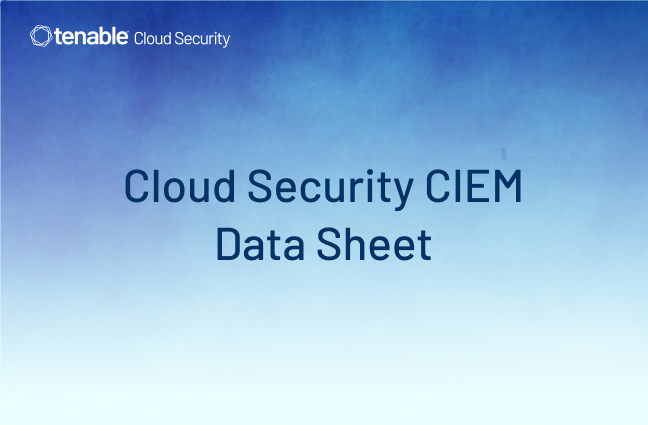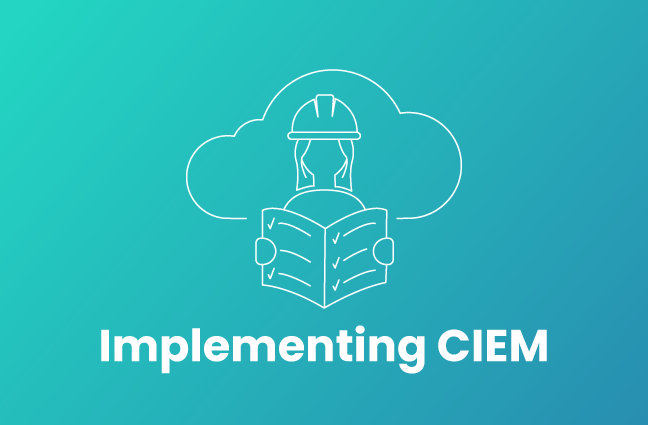The Benefits of Cloud Entitlement Management
Cloud identities and entitlements pose grave challenges - learn about the benefits of CIEM solutions and KPIs for measuring them

Picture the headquarters of a large insurance enterprise, work screens aglow. It was a regular day for the cloud security team – or so they thought. A file was illicitly accessed, alerts overlooked by daily pressures and, admittedly, alert fatigue. It took months for the team to realize that a bad actor, exploiting permissions misconfiguration, had accessed sensitive data.
Cloud identities and their entitlements pose grave challenges in the public cloud. Today, organizations recognize that securing cloud identities and access is essential. This blog explores how cloud infrastructure entitlement management (CIEM) security helps.
Cloud Identity, Entitlements and Access - The Weaknesses
Cloud identities - human and service – and the access entitlements they are granted to resources are prime hunting ground for malicious actors seeking permissions weaknesses. Attackers exploit security gaps such as unauthorized access, third party access risks and privilege escalation to gain an entry point for a breach. The distributed nature of the cloud and increasing use of multiple cloud services leads to inconsistencies in cloud identity management and IAM policies, exacerbating the situation.
The challenges to confronting cloud IAM security are many:
- Lack of visibility into identities, resources and permissions - The volume of cloud accounts and identities challenges teams to understand who can access what.
- Inadequate IAM hygiene - Neglecting to implement cloud identity best practices like Multi-Factor Authentication (MFA) and access key rotation jeopardizes security.
- Excessive permissions - Organizations typically assign developers overly broad access, creating a permissions gap that endangers sensitive resources.
- Standing privileges - The diametric opposite of the least privilege principle, standing elevated permissions are an illicit-resource-access accident waiting to happen.
- Toxic permissions - Cloud complexity leads to hard to detect blends of permissions, misconfigurations and other factors that can create the greatest risks.
- Inconsistent access governance - As enterprises embrace multiple clouds, disparities in access control and security policies emerge.
- Insufficient expertise - The shortage of know-how in cloud identity management across clouds and how to remediate findings is a common pain point.
What is CIEM – and What Do CIEM Solutions Offer?
Cloud Infrastructure Entitlement Management (CIEM) is a powerful solution for combatting the security challenges of cloud identities and entitlements. CIEM tools enable organizations to automate entitlement management and enforce least privilege access at scale.
CIEM security enables organizations to:
- Detect and contextualize risky identities, permissions and resources. CIEM also offers guidance for remediating rapid and enforcing least privilege at scale.
- Identify toxic combinations: CIEM identifies relationships that create openings for privilege escalation, lateral movement and inadvertent data access.
- Implement Just-in-Time (JIT) Access: Granting time-limited elevated access using tightly controlled, transparent approvals reduces risk and aligns with least privilege.
- Enhance IAM Hygiene: CIEM enforces IAM security best practices like multi-factor authentication and access key rotation, bolstering overall security.
- Unify Access Control: CIEM centralizes and simplifies access control governance, enforcing consistent security policies across multiple cloud environments.
CIEM Benefits
CIEM solutions offer a suite of benefits that fortify security cloud identity services in the public cloud - and span AWS CIEM, Azure CIEM and GCP CIEM.
Providing enhanced visibility into identities, resources, and permissions, CIEM empowers organizations to pinpoint potential vulnerabilities and proactively address them. Through context-aware risk prioritization, CIEM ensures that security teams focus on addressing the most critical threats first, optimizing their efforts for maximum impact. Remediation is streamlined by CIEM's automated capabilities, which provide prompt rectification of high-risk permissions and toxic combinations delivered via existing workflows to resource owners and other stakeholders.
CIEM reduces the attack surface including by eliminating inactive users, reining in excessive permissions, identifying behavioral anomalies and revoking standing privileges – curbing exposure of resources and minimizing vulnerability windows. Additionally, CIEM solutions aid in achieving compliance with industry standards that emphasize identity and access security, ensuring that organizations align with regulatory requirements while bolstering their overall cloud security posture.
CIEM enables you to secure cloud identities, permissions and secrets – cloud security fundamentals that are essential to have to be able to enforce least privilege and zero trust. Best in breed CIEM solutions equip an organization to clean up IAM security by:
- Delivering expertise in finding, prioritizing and addressing cloud IAM risks
- Providing powerful visualization and step-by-step remediation that can simplify resolution of even the most complex cloud issues
- Accelerating security collaboration and best practice across developers, dev/ops, security and IAM
Measuring CIEM Success
While the benefits of CIEM tools are evident, quantifying their impact calls requires a bit of scrutiny and comparison. Doing so is worth the effort – to optimize your security investment, adapt your cloud security strategy and help others understand the value of the solution.
Here are a few KPIs that can help you assess a CIEM solution’s impact:
-
- Mean Time to Detect (MTTD): Compare the time to detect risks before and after CIEM deployment. A shorter MTTD indicates improved threat identification and response times.
- Time to Determine Critical and High-Risk Incidents: Compare the time required to identify incidents that are critical and high risk before and after CIEM deployment. Faster incident determination implies better prioritization and resource allocation.
- Hours or Headcount Saved: Measure how much less time security teams are spending on manual tasks since implementation. A successful CIEM tool should streamline processes, freeing up time for more strategic initiatives.
- Mean Time to Respond (MTTR): Measure how long it takes to remediate a finding post-detection, pre and post CIEM implementation. A decreased MTTR signifies quicker incident response and mitigation.
- Time to Identify Alerts as False Positives: Assess the time taken to identify and dismiss alerts flagged as false positives. A shorter duration reflects improved efficiency in distinguishing actual threats from false alarms.
Conclusion
Remember the corporate headquarters caught off guard? Heed its cautionary tale. Say goodbye to disregarded alerts – imagine the benefits of being alerted to which identity risks are high and critical. Protecting data and resources requires constant vigilance. Cloud Infrastructure Entitlement Management (CIEM) solutions emerge as a must-have for improving visibility, reducing identity and access security risks and achieving cloud identity governance including across a multicloud environment - with automation and efficiency.




